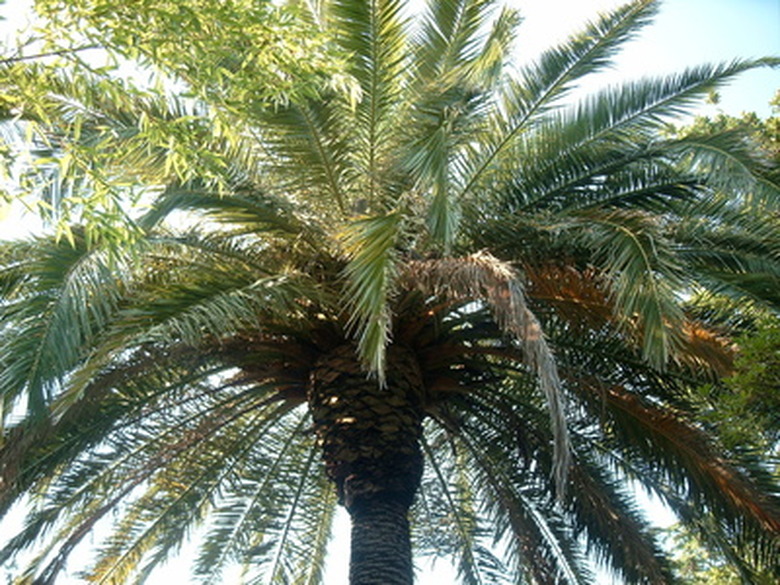How To Care For A Pindo Palm
We may receive a commission on purchases made from links.
The pindo palm (Butia capitata, USDA plant hardiness zones 8 through 10a), also called the jelly palm, is a versatile and hardy palm tree found in coastal areas throughout the Southeast, the Gulf States and California. With its curving, light green to bluish-gray fronds and yellow fruits, the pindo palm makes an excellent specimen planting. It's also well-suited to growing in containers at poolside and on patios. Despite its tropical appearance, the pindo palm is cold-hardy, tolerating occasional dips in temperatures as low as 10 degrees Fahrenheit. Follow proper techniques for planting and care to have one of these luxuriant palm trees grace your yard.
Things Needed
How to Care for a Pindo Palm
1. Choose Sunny Planting Spot
Select a planting site for the pindo palm in full sun with well-drained, sandy loam or clay loam soil with a soil pH of 5.5 to 6.5. Don't plant the palm where it will overhang patios or decks, as the fruits can stain wood and concrete. Plant it at least 10 feet from sidewalks. Keep in mind that your pindo palm can reach 20 feet tall and have a spread of 12 feet; give it room to grow.
2. Plant the Pindo Palm
Plant your pindo palm in the spring or summer by digging a hole twice the size of the root ball, and just deep enough that the tree will be planted at the depth at which it was grown. Backfill with the original garden soil. Blend in a palm tree fertilizer at the rate of 2 ounces for every inch of trunk diameter.
3. Create a Water Ring
Create a water ring, or berm, around your pindo palm by shaping the soil around the planting hole into a ring 6 inches high by 8 inches wide, with higher outside edges. This will help conserve water and promote good root establishment by drawing moisture outward.
4. Irrigate Your Pindo Palm
Irrigate your pindo palm by filling the ring with water. Continue to water your newly-planted pindo palm frequently, watering it daily for the first two weeks. Avoid letting the soil dry out, which could severely stress your new tree, but avoid waterlogging the soil or allowing standing water around the tree. Reduce watering gradually over several months as the palm tree establishes itself, watering as needed when the top 3 inches of soil are dry. After its second year, your drought-tolerant pindo palm should need little watering.
5. Mulch Around the Tree
Apply a 3-inch layer of organic mulch to conserve moisture and protect the roots. Don't let the mulch touch the palm tree's trunk.
6. Fertilize Your Pindo Palm
Fertilize your pindo palm tree in the spring and again in midsummer, using a slow-release palm fertilizer in a 12-4-2 formulation. Apply it to the soil in a large ring starting at least 2 feet from the trunk and extending out to the drip line, which is the place where rainwater drips from the outermost fronds, at the rate of 8 ounces per inch of trunk diameter. Water after applying.
7. Prune the Palm Tree
Prune any yellowing or damaged fronds. Your pindo palm won't shed them naturally. Pindo palms shouldn't be pruned in the winter.
